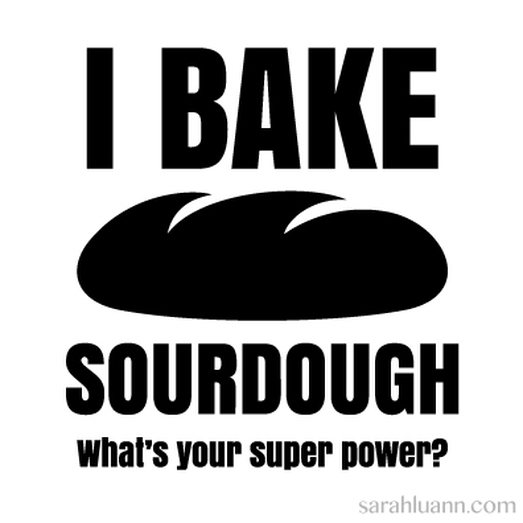|
Everybody who follows me on facebook is probably sick of my sourdough pictures. I keep posting them. I can't help it--I'm so excited about what I've learned. I've really come a long way from my first small, flat, brick-like, much-too-sour loaf. Was that only a couple months ago? I have now learned to harness the powers of organisms too small to see to make something beautiful and delicious! Its basically like a superpower. I thought, Wouldn't that be great on a shirt? Click here to get it on a shirt. Or if that link doesn't work, copy/paste this:
http://society6.com/product/i-bake-sourdough-whats-your-superpower_vneck-tshirt#37=297&39=329&38=309 The idea didn't stop there, though. I thought, there are a whole lot of skills that take a lot of time and study to develop. Skills that are amazing and difficult to understand. So, why not do a whole series of super power images? Thats what I did. I have created designs for 10 real-life "superpowers", most of which I don't actually have, but wish I did. I think that the people who do should be able to show off their skills with an awesome t-shirt or poster. I'm not the first to have this idea. A quick internet search shows me a few shirts saying "I'm a mom, whats your superpower?" and "I'm a dad, whats your superpower?" and a few others--teacher, nurse, firefighter etc. Those are all cool, but I wanted to focus on skill sets that aren't necessarily an occupation, or whatever you call being a mom or a dad. I created designs for "superpowers" which I haven't already seen on a similar shirt--which isn't to say they don't exist, just that I haven't seen them. And, I wanted them to be well designed--most of those I saw were just illustrated with clipart, if at all. I wasn't too jazzed about the font choices either. And the overall design wasn't amazing either. Yeah, sometimes I can be an art snob. So, this was also an artistic challenge for myself. I wanted to create a set of images that hang together and look good. My criteria were these:
I'll be posting 1 each weekday starting today, until all 10 are posted. Stay tuned!
0 Comments
|
Your email will not be shared with anyone. It will only be used for updates from me, and you can unsubscribe at any time.
Categories
All
|


 RSS Feed
RSS Feed